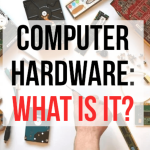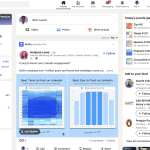
Think about the last time you sent a file directly to a friend’s phone. Or maybe you’ve used a messaging app that promises your chats are end-to-end encrypted. In both cases, you were tapping into a technological paradigm that’s quietly challenging the status quo: decentralized computing and peer-to-peer (P2P) networks.
For decades, our online lives have been dominated by a client-server model. You know the one—a giant, centralized server (owned by a big tech company) that you, the client, are constantly requesting data from. It’s efficient, sure. But it’s also a single point of failure, a bottleneck, and frankly, a privacy nightmare waiting to happen.
Decentralized computing flips that script. Instead of one master computer calling the shots, it distributes the work across a vast network of individual devices. Each participant, or “node,” is equal. They share resources—processing power, storage, bandwidth—directly with each other. No middleman required.
It’s a Collective, Not a Kingdom
The core idea here is autonomy. In a true peer-to-peer network, there is no central authority. It’s a bit like a bustling farmer’s market. Each farmer (the peer) sets up their own stall and interacts directly with customers and other farmers. They trade goods, share information, and the market thrives through collective participation. Contrast that with the client-server model, which is more like a massive supermarket chain. You go to the one central store, and you get what they have on the shelves, according to their rules.
This distinction is crucial for understanding the benefits of decentralized networks. Let’s break down a few key advantages.
Why Go Decentralized? The Core Perks
First up, resilience. A centralized system is a castle with one gate. Knock down the gate, and the whole kingdom falls. A DDoS attack or a server outage can take an entire service offline. A P2P network, however, is more like a swarm of ants. You can step on a few, but the colony adapts and keeps moving. The network has no single point of failure, making it incredibly robust and fault-tolerant.
Then there’s censorship resistance. Because control is distributed, it’s incredibly difficult for any single entity to shut down the network or control the information flowing through it. This is a foundational principle for technologies like Bitcoin. No government or bank can simply decide to turn it off.
And we can’t forget about privacy and security. Well, in many cases. By eliminating a central data honeypot, you remove a prime target for hackers. Data can be encrypted and sharded across the network, so no single peer holds the complete picture. That said, it’s not a magic bullet—the specific implementation matters a ton.
From Napster to NFTs: The P2P Journey
Peer-to-peer isn’t some futuristic fantasy. It has a rich, and sometimes controversial, history. Remember Napster? It was, for all its legal issues, a landmark P2P file-sharing service that showed the world the raw power of distributed networks. It connected millions of users directly to each other’s music libraries.
But P2P technology has matured far beyond just sharing MP3s. Today, it’s the bedrock of some of the most transformative technologies of our time.
- Blockchain and Cryptocurrency: This is the big one. Bitcoin, Ethereum, and thousands of other cryptocurrencies are essentially global, decentralized P2P networks. They maintain a shared, tamper-proof ledger without any central bank or administrator.
- File Storage: Services like the InterPlanetary File System (IPFS) are creating a peer-to-peer method for storing and sharing hypermedia. Instead of pointing to a file on a specific server (like
https://central-server.com/myfile.pdf), you ask the entire network, “Who has this file?” It’s a more efficient and permanent way to store data on the web. - Web3 and dApps: The vision of a “decentralized web,” or Web3, is built entirely on P2P principles. Decentralized applications (dApps) run on a blockchain or P2P network, giving users back control of their data and digital identity.
It’s Not All Sunshine and Rainbows: The Challenges
Okay, so decentralized computing sounds like a utopian dream. But let’s be honest, it comes with its own set of very real headaches.
| Challenge | What it Means |
| Scalability | Reaching consensus across thousands of nodes can be slow. It’s why some blockchain networks struggle with transaction speed and high fees compared to centralized systems like Visa. |
| Complexity | Let’s face it, managing a decentralized system is technically complex. For the average user, setting up a wallet or understanding gas fees is a significant barrier to entry. |
| Energy Consumption | Some consensus mechanisms, like the “Proof of Work” used by Bitcoin, are notoriously energy-intensive, raising serious environmental concerns. |
| Regulatory Gray Areas | How do you regulate something with no central authority? Governments worldwide are still grappling with this question, creating uncertainty. |
And then there’s the user experience problem. Centralized platforms are, for now, just easier. One-click login, seamless interfaces, and instant customer support. The decentralized world is still playing catch-up in making its technology accessible to everyone, not just the tech-savvy.
The Future is a Hybrid, and It’s Already Here
So, will centralized servers just… disappear? Unlikely. The future isn’t a total overthrow of one model by the other. It’s a hybrid. We’re already seeing this blend in action.
Consider a video streaming service. It might use a centralized server to manage your account and recommendations but leverage a P2P “content delivery network” (CDN) to stream the actual video data from devices near you. This reduces bandwidth costs and speeds up delivery for everyone. It’s the best of both worlds.
This hybrid approach allows us to leverage the speed and simplicity of centralized systems where it makes sense, while integrating the resilience and user-empowerment of decentralized networks where it matters most.
The real shift happening now is a philosophical one. It’s a move away from trusting a single corporation with our digital lives and toward trusting a transparent, mathematical protocol. It’s about building a web that is by the people, for the people—less reliant on gatekeepers and more focused on individual sovereignty.
That’s the promise, anyway. The next time you send a file or see a news headline about NFTs, remember the invisible, collective engine humming beneath the surface. It’s a quiet revolution, one connection at a time.










